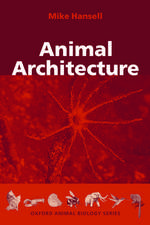Animal Groups in Three Dimensions: How Species Aggregate
Editat de Julia K. Parrish, William M. Hamneren Limba Engleză Hardback – 12 dec 1997
Preț: 905.46 lei
Preț vechi: 1052.86 lei
-14% Nou
Puncte Express: 1358
Preț estimativ în valută:
173.28€ • 180.24$ • 143.05£
173.28€ • 180.24$ • 143.05£
Carte tipărită la comandă
Livrare economică 12-26 aprilie
Preluare comenzi: 021 569.72.76
Specificații
ISBN-13: 9780521460248
ISBN-10: 0521460247
Pagini: 402
Ilustrații: 104 b/w illus.
Dimensiuni: 183 x 261 x 26 mm
Greutate: 1.04 kg
Ediția:New.
Editura: Cambridge University Press
Colecția Cambridge University Press
Locul publicării:New York, United States
ISBN-10: 0521460247
Pagini: 402
Ilustrații: 104 b/w illus.
Dimensiuni: 183 x 261 x 26 mm
Greutate: 1.04 kg
Ediția:New.
Editura: Cambridge University Press
Colecția Cambridge University Press
Locul publicării:New York, United States
Cuprins
1. Unifying principles, galactic framework, and the holy grails of aggregation Julia K. Parrish, William M. Hamner and Charles T. Prewitt; Part I. Imaging and Measurement: 2. Methods for three-dimensional sensing of animals Jules S. Jaffe; 3. Analytical and digital photogrammetry Jon Osborn; 4. Acoustic visualization of three-dimensional animal aggregations in the ocean Charles H. Green and Peter H. Wiebe; 5. Three-dimensional structure and dynamics of bird flocks Frank Heppner; 6. Three-dimensional measurements of swarming mosquitos: a probabilistic model, measuring system, and example output Terumi Ikawa and Hidehiko Okabe; Part II. Analysis: 7. Quantitative analysis of animal movements in congregations Peter Turchin; 8. Movements of animals in congregations: an Eularian analysis of bark beetle swarming Peter Turchin and Gregory Simons; 9. Individual decisions, traffic rules, and emergent pattern in schooling fish Julia K. Parrish and Peter Turchin; 10. Aggregate behavior in zooplankton: phototactic swarming in four developmental stages of Coullana canadensis (Copepoda harpacticoida) Jeannette Yen and Elizabeth A. Bryant; Part III. Behavioural Ecology and Evolution: 11. Is the sum of the parts equal to the whole?: the conflict between individuality and group membership William M. Hamner and Julia K. Parrish; 12. Why are some members more likely to be on the outside of the group?: Testing the evolutionary predictions William L. Romey; 13. Costs and benefits as a function of group size: experiments on a swarming mysid Paramesopodopsis rufa fenton David A. Ritz; 14. Predicting the three-dimensional structure of animal aggregations from functional consideration: The role of information Lawrence M. Dill, C. S. Holling and L. H. Palmer; 15. Perspectives on sensory integration systems: problems, opportunities, and predictions Carl R. Schilt and Kenneth S. Norris; Part IV. Models: 16. Conceptual and methodological issues in the modeling of biological aggregations Simon A. Levin; 17. Schooling as a strategy for chemotaxis in a noisy environment Daniel Grunbaum; 18. Trail following as an adaptable mechanism for popular behavior Leah Edelstein-Keshett; 19. Metabolic models of fish school behaviour: The need for quantitative observations William McFarland and Akira Okubo; 20. Social forces in animal congregations: interactive, motivational and sensory aspects Kevin Warburton.
Recenzii
' … worthwhile book with something in it for everyone who is interested in animal groups.' Ethology
' … has definite possibilities for the imaginative production of project work at the undergraduate level, using some concepts of applied mathematics and many standard techniques of calculus and statistics.' Peter Giblin, The Mathematical Gazette
' … has definite possibilities for the imaginative production of project work at the undergraduate level, using some concepts of applied mathematics and many standard techniques of calculus and statistics.' Peter Giblin, The Mathematical Gazette
Descriere
The first attempt to investigate this pervasive biological phenomenon from a variety of disciplines, from physics to mathematics to biology.


















